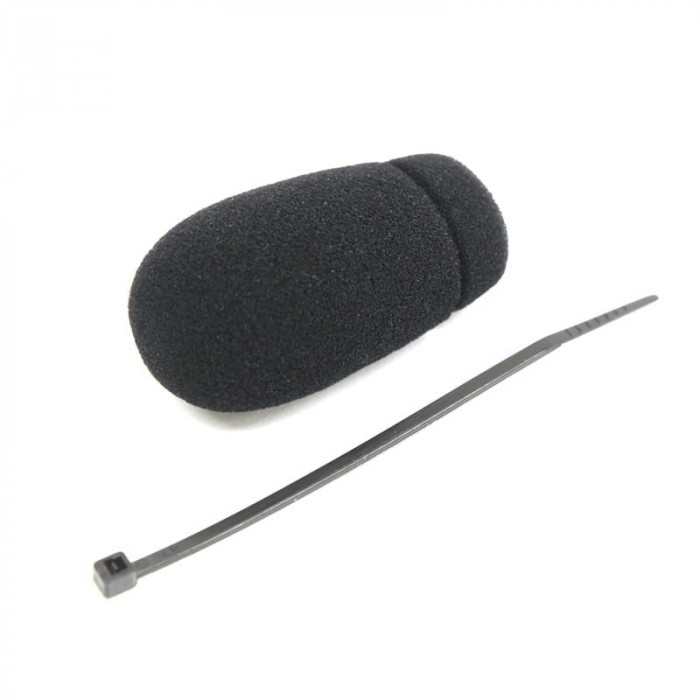Microphone Wind Sock
Microphone wind sock, also known as a windscreen, is an essential accessory for anyone who regularly uses a microphone. Whether you're a professional musician, a podcaster, or a content creator, wind noise can significantly affect the sound quality of your recordings. In this article, we'll explore the benefits of using a microphone wind sock and why it's a must-have accessory for anyone serious about their audio quality.
Pain Points of Wind Noise
Have you ever recorded a podcast or a video, only to realize later that you can hear every gust of wind that passed by? Wind noise can be a significant problem for content creators, as it can quickly ruin a great recording. Wind noise is caused by the pressure of the wind hitting the microphone and can be challenging to remove in post-production. However, this problem can be easily solved by using a wind sock.
The Target of a Wind sock
The primary purpose of a wind sock is to reduce wind noise on your recording. It does this by creating a barrier between the microphone and the wind. The wind sock's fur-like material effectively diffuses the wind, reducing its impact on the microphone. This means that you can record without worrying about the wind ruining your recording.
Summary of Benefits
The benefits of using a microphone wind sock are clear. It reduces wind noise, improves the audio quality of your recordings, and is a must-have accessory for anyone serious about their content creation. So, if you're looking to take your audio quality to the next level, consider investing in a quality wind sock.
Using a Wind sock
When using a microphone wind sock, it's essential to choose the right one for your microphone. There are many different types of windsocks available, from universal fit to custom-made options. Universal fit windsocks are ideal for those who use multiple microphones, while custom-made options provide the best possible protection for your microphone.
As for personal experience, I once recorded a podcast episode outdoors, only to find out later that the wind noise was terrible. Not only did it affect the audio quality, but it also made it tough to hear what we were saying. Since then, I've invested in a good-quality windsock, and it's made a world of difference. I can now record outdoors without worrying about wind noise affecting the quality of the recording.
Types of Windsocks
There are many different types of windsocks available on the market, ranging from small, compact options to larger ones that are designed for use with boom microphones. Some of the most popular windsocks on the market include J&M Microphone Wind Socks, Coxmate Microphone Wind Socks, and Rycote Mini Windjammers.
Material and Size
Windsocks are typically made from synthetic fur, which is designed to diffuse the wind. The material is easy to clean and will last for years with proper care. Windsocks come in all shapes and sizes. Still, they are typically designed to fit over a microphone's foam cover and provide an extra layer of protection against wind noise.
Choosing the Right Windsock
Choosing the right windsock for your microphone can be a bit of a challenge, as there are so many different options available on the market. However, as a general rule of thumb, it's always a good idea to choose a windsock that's specifically designed for your microphone. This will ensure that you get the best possible protection against wind noise. Additionally, always opt for high-quality windsocks, as they are more durable and will last longer than cheaper options.
Question and Answer
Q: Can I use a windsock indoors?
A: While windsocks are primarily designed to reduce wind noise, they can also be useful for reducing other types of noise, such as plosives or breath noise. If you're recording in a noisy environment, using a wind sock can help improve the audio quality of your recordings.
Q: Can I make my wind sock?
A: While it's possible to make your own wind sock, it's generally easier and more effective to purchase a pre-made one. Pre-made wind socks are designed to fit specific microphone models and provide the best possible wind noise reduction.
Q: Do all microphones need a wind sock?
A: While not all microphones require a wind sock, it's always a good idea to use one if you're recording outdoors or in a windy environment. Wind noise can significantly affect the audio quality of your recordings, so using a wind sock can help ensure that your recordings sound great.
Q: Can I use a wind sock in the rain?
A: Windsocks aren't typically designed to be used in the rain, as they can become soaked and affect the audio quality of your recordings. However, some manufacturers do produce waterproof windsocks that are designed to be used in wet conditions.
Conclusion
Microphone wind socks are a must-have accessory for anyone serious about their content creation. They help reduce wind noise, improve audio quality and ensure that your recordings sound great. Whether you're a professional musician, a podcaster or a content creator, investing in a quality wind sock is an investment in the quality of your work.
Gallery
J&M Microphone Wind Socks - MS-74LSX Wind Sock Kit For AeroMike III

Photo Credit by: bing.com /
J&M Microphone Wind Socks, MS-57LSB Wind Sock Kit For AeroMike II

Photo Credit by: bing.com / wind
Coxmate Microphone Wind Sock | EuRow For Rowers

Photo Credit by: bing.com / sock microphone wind accessories eurow rowers
J&M Microphone Windsocks MS-2BL Large Boom-Mike (2) MS-2BL | EBay

Photo Credit by: bing.com / microphone windsocks 2bl ms boom mike
Coxmate Microphone Wind Sock | EuRow For Rowers

Photo Credit by: bing.com / microphone sock wind eurow windsock